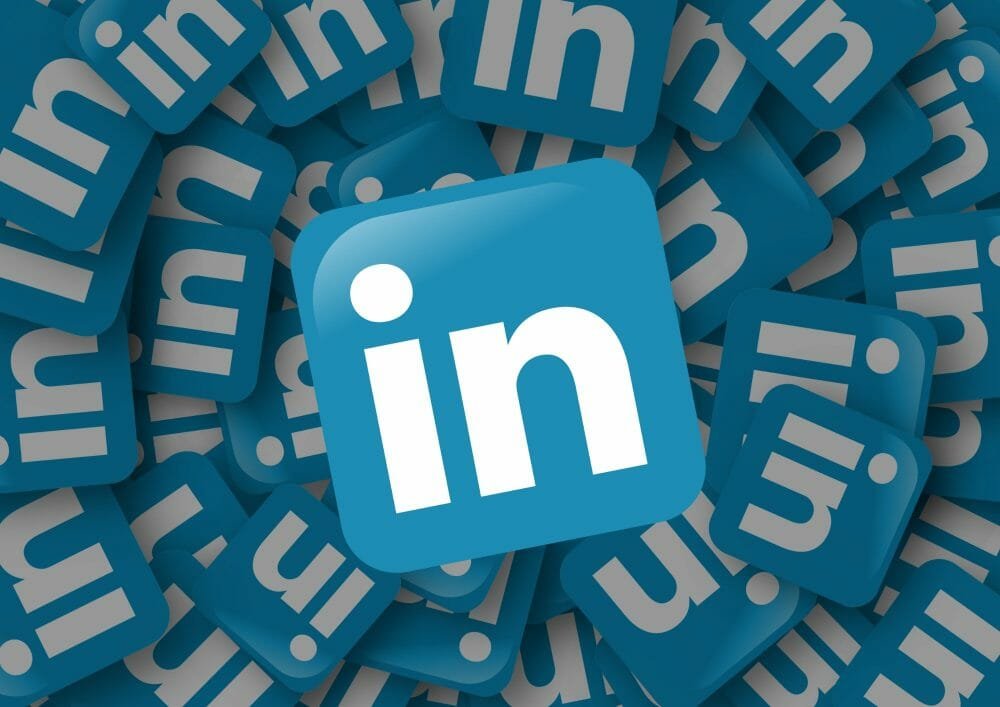In a study conducted by TheLadders, an eye tracking heat-map shows that the first thing that catches people’s eyes is your profile photo.
People generally spend 19 percent of the total time they spend looking at your profile typically looking at your photo.
LinkedIn also stated that profiles in LinkedIn search results with photos are seven times more likely to be clicked on than those without photos.
It is important to include a photo of yourself in your LinkedIn profile.
So how do you make sure your profile photo impresses?
Here’s four great tips concluded by various researches and from professional recruiters and LinkedIn users.
First of all, choose a photo that looks like you in real life. The internet can be deceiving sometimes.
Nobody likes being shown something only to find out later that it is not what was initially perceived or expected.
In person, you have less than 7 seconds to create a positive first impression and that is normally done through a hand shake, eye contact, the way you dress, how you carry yourself and your energy.
Online though, that window of opportunity is cut short to 3 seconds or even lesser.
In this short time, the other person forms an opinion about you based on your profile picture and the accompanying information that is presented to them.
They will evaluate and form a perception as to whether or not can they trust you, are you friendly, are you approachable and even what kind of personality you have.
First impressions are very important and that will help lay down the first layer of credibility.
Then you need to make sure you are making the right expression in your photo. Avoid making a straight face.
Many might be wondering if it is appropriate to smile in a professional profile photo. The answer is yes.
A pleasant smile has been proven to be able to stimulate positive feelings and increase engagement as it portrays approachability.
Dress as if you are going to work. Make sure what you wear depicts you in a manner that is appropriate in your field of profession.
Here’s one tip for you, avoid wearing white colored top as it will make you look washed out or unnoticed among all other profile in the search results.
Colors like black, blue, or even orange will be some examples of pleasing colors to the eyes because it is more soothing and inviting.
To draw focused attention, position your face at the center of the frame.
Make sure that your face takes up at least 60% of the dimension within the frame as it is the ideal dimension that ensure maximum direct focus of the eyes on the person’s face within the frame.
Lastly, keep a clean and tidy background. This will avoid unnecessary distractions and keep the viewer’s eyes focused on your face.
The best color for your background would be white or light blue color because it will give a sense of clarity and professionalism.
Now let’s look at your headline. In LinkedIn, your profile headline is what defines you – who you are and what you do. It’s a short and clear description of yourself.
Here are three important principles of what you must include in your headline.
First up, explain who you are, what is your profession and what position are you holding.
Then write down who can you help solve problems, which means who will need your assistance in your profession.
Lastly, explain how you can help them and in how do you add value to them.
Let’s head on to your Summary field in your profile. Here’s where you fill in your abilities, profession, and achievements to tell people what you are capable of and why they should engage with you.
Write down your various functions and make sure they are all solution-oriented.
For example, I am a professional recruiter and I have recruited 10 valuable employees and increase the company’s sales goals by 10 percent within a month.
Follow this structure of description when you list down your functions, prepare an introduction paragraph for each past experience you have.
You can also add media files like videos, to further explain your achievements.
This is a great way to increase interest and trust in you as media files are generally more intriguing.
The last step to strengthening your LinkedIn profile is by adding links and recommendations.
Make use of the three URLs you are allowed on your profile and link to it.
You should include links in your profile which lead viewers to relevant sites that showcases your work.
For example,if you have a work-related blog or online portfolio, insert the link in your profile.
This will further display your ability and profession to your prospects whereby they will be able to see for sure what you are capable of and how exactly you can help them solve their problem.
Recommendation is also another great tool you can use to prove your claims and worth.
Get your ex or current co-workers or supervisor to write about how well you work and what are the great achievements you have accomplished.
This works to create a concrete proof and support to your profile.
These are the essential components needed to establish your LinkedIn profile as an authority figure.
Follow the steps above and you will create a strong profile that can kick-start your journey to successful and fulfilling engagements on LinkedIn.
So how can you develop engagement with potential clients on LinkedIn?
You can use the Add Connections function.
Click on My Network on the tab, and click Connections. Then click on Add Connections.
When you reach the next page, simply key in your email address and LinkedIn will automatically suggest your profile to related users regardless of individuals or companies.
Other than that, by using the Connections tier system, you can even get in contact with people that you are not directly connected.
1st Connections are the people who are directly connected to you while the 2nd Connections are people who are directly connected to your 1st Connections, and lastly the 3rd Connections are those directly connected to your 2nd Connections.
This tier of connections allow you to invite people to connect with you if they are the 2nd Connections.
You can also request to connect with 3rd Connections depending on their privacy settings.
So in general understanding, this system effectively enables you to connect with specific connections that you wish to target.
The more 1st Connections you have, the more people you can connect with.
There are three tips to improve your LinkedIn connections.
Send them message on a weekly basis. This is the most straight forward way to connect with your people on LinkedIn.
It is personal and engaging because it reaches that person straight.
Start off with a simple introduction of yourself and also make sure you include something that could spark common interest with that person in order to initiate engagement.
Other than that, you can ask them an expertise-request question.
Through this way, you can build a connection where it is based on how that person’s expertise can aid you while at the same time you could offer the same as well.
A connection built on intellectual ground can be a very strong bond.
From the above effort done within LinkedIn, you can then expand your interaction and connect with them on other social media platforms like Facebook and Instagram.
Next up is utilizing introductions.
When you can’t seem to be connecting with a prospect even after using the ways above, the next best thing is to send them an InMail.
InMail is a function that allows you to send a private message to anyone on LinkedIn, regardless of whether you are connected to them or not.
It is like sending a cold email. Or sending a private message to someone you’re not friends with on Facebook.
So here’s where you can introduce yourself via InMail. Enquire for your needs or propose your offer to engage with prospects.
You can also search through Recommendations and find for more prospects.
Search for people who have just gave or received a recommendation. Because you would stand a better chance to succeed at an introduction to people like them.
Many have said to have higher success rate in approaching people as such because of the on-going positive association that was made earlier.
In simple words, when people are feeling positive in promoting others, they are more open and welcoming to accept yours.
Lastly, utilizing Advanced Search to search for high converting leads.
Advanced Search is one of the most useful and effective functions of LinkedIn.
It allows you to search LinkedIn for anyone, on a vast amount of criteria, even if you don’t know exactly who to expect to turn up in the search.
Utilize the many criteria boxes LinkedIn provide you and narrow down your search in reaching the most ideal clients you want to engage with.
Look for the Advanced button right beside your Search text boxright. And you’ll be looking at an array of criteria you can use to narrow down your search.
Here are five strategies to help you further customize your search to reach targeted prospects.
Generalizing your search: If you’re looking for your targeted contacts based on the company they work for, apply maximum focus on the Title and Industry fields to find your prospects.
Narrowing your search: Apply heavy use on the Keywords field to narrow your results list when you need to reach people within a specific niche of an industry.
Targeting specific individuals: Use primarily the Company or Keywords field, plus the Title field, to help you find specific individuals in your targeted companies or industries.
Helping your product or service sell itself: Searching for the customers of your clients can get those people interested about your product or service.
This is a marketing strategy called the pull marketing. Pull marketing gets your client’s customers demanding for your service which in result will gain you sales from your client.
Reaching out through service professionals: Search for consultants who are hired by your prospects by using the Title and Industry fields, or by choosing Consultants/Contractors from the Interested In drop-down list.
Because LinkedIn might help you discover a shared connection or bond between you and these consultants, you can ask those consultants for help in reaching your prospects.
What is LinkedIn Group?
LinkedIn groups consist of a pool of people with certain things in common. For example, location, expertise industry, special skills, interest and more.
By correctly utilizing these groups, you widen your network effectively in a great scale.
Joining relevant and useful LinkedIn groups will be your most essential tool for driving high converting leads.
However, many make the common mistake where they join specific groups that are only related to their industry or expertise.
Yes, it is probably the first thing that comes to your mind – to join a group related to what your business is selling.
However, this is not where you will find your ideal clients, or rather may I put it in this way – you won’t make the cut because the group will be full of your peers and competitors.
So unless you are outstandingly above your peers and competitors, it is best to survey and research closely on the groups you’re planning to join.
Aim for groups that have more demand than supply. That way you will stand a better chance to gain interest from the group members.
So how do you join a LinkedIn group?
To find Groups, go to the Search bar up here in your homepage, hover over the icon that has 3 lines, select ‘Groups’ from the drop down box.
Then you can type in your keywords in the search bar to search for your ideal group to engage with.
You need to narrow down your search by adding a keyword that’s relevant to your target market.
If you’re networking with business owners, simply add the word “business” or “entrepreneurs” will help targeting your search to a more ideal pool of prospects.
How to identify what is a good LinkedIn Group?
There is regular discussion going on. This goes to show that the group members are active and engaged. There will be potential clients in there because there is demand.
The quality of discussions. Are the discussions in the group spam-like and not systematic or is it full of discussions with useful content?
This will help you identify if the group members are potential clients or not, as well as aiding you in researching what is in demand and if you can offer your expertise to engage with them.
The most popular job function in the group is your target market. For example, you want to see “Business” as the main function in the group statistics if you’re targeting business owners. This should serve as an indication of a quality group when you search for a group to join.
So what should you do to expand your network after you have joined a good LinkedIn group?
Once you join a new group, reach out to the group admin and ask, “What would you like to see more of in your group?”
Here are some questions you can ask the group admin and try to offer to the group.
For example, is there anything you can share to the group that can offer value to the group members?
This action is a good approach that will display you as a beneficial addition to the group as you appear to be active in involvement. In a long run, some group admins will likely let you share a good deal of your content in their group.
It is also important to spend at least a week just going through reading and commenting on other people’s threads.
This will help you build connections with your ideal prospects. In discover of potential clients, you should also be making connection request and sending them InMail etc.
















